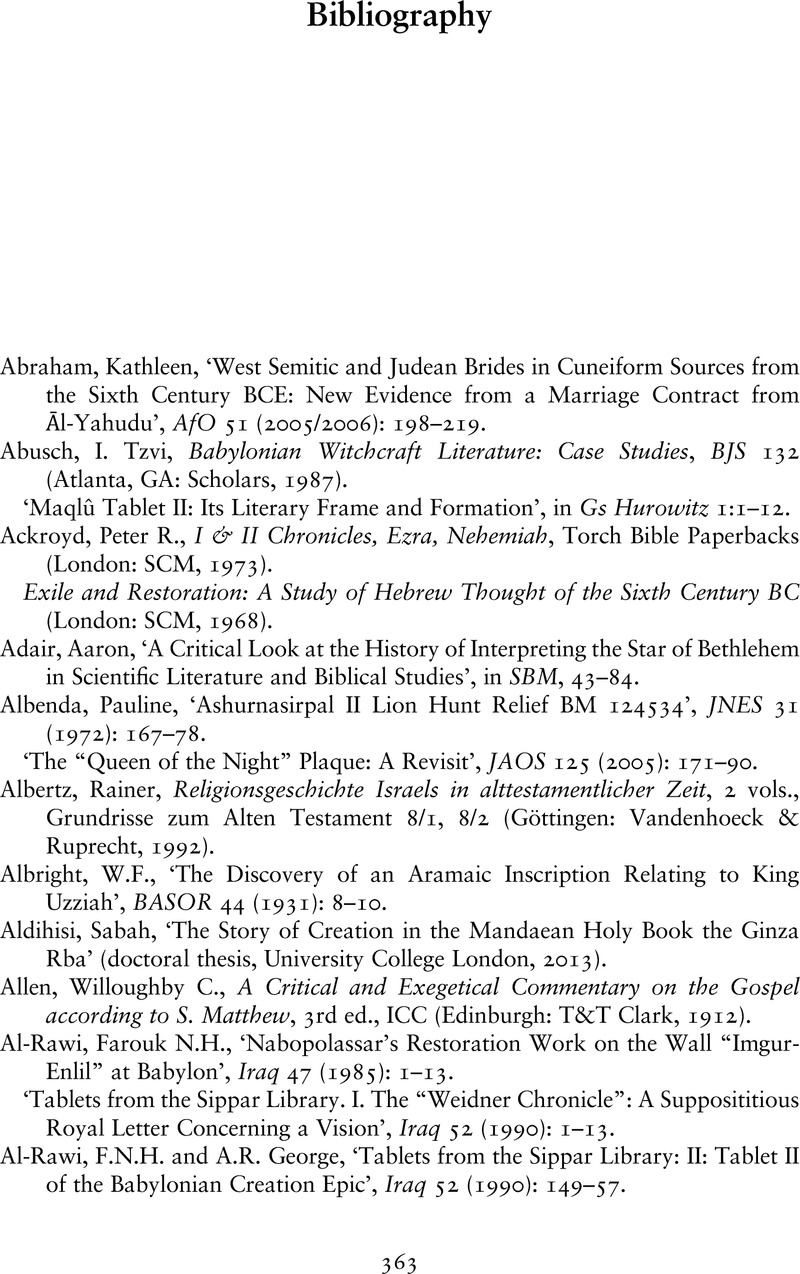Book contents
- Mesopotamian Civilization and the Origins of the New Testament
- Mesopotamian Civilization and the Origins of the New Testament
- Copyright page
- Dedication
- Epigraph
- Contents
- Figures and Tables
- Preface
- Abbreviations
- Prolegomena
- 1 The Religious Landscape of the Near East at the Turn of the Era
- 2 Channels of Transmission
- 3 New Testament Epistemology: A Reappraisal
- 4 Kingship Models and the Dying-Rising King
- 5 Ninurta, Nimrod, Abimelech and Christ: A Case Study of Mediated Influence
- 6 Marduk, Ištar and Nabû, and New Testament Christology
- 7 Bloodlines, Omens and Festivals
- 8 Conclusions on the New Testament’s Mesopotamian Legacy
- Bibliography
- Index of Biblical References
- Index of Modern Authors
- Index of Subjects
- References
Bibliography
Published online by Cambridge University Press: 09 July 2022
- Mesopotamian Civilization and the Origins of the New Testament
- Mesopotamian Civilization and the Origins of the New Testament
- Copyright page
- Dedication
- Epigraph
- Contents
- Figures and Tables
- Preface
- Abbreviations
- Prolegomena
- 1 The Religious Landscape of the Near East at the Turn of the Era
- 2 Channels of Transmission
- 3 New Testament Epistemology: A Reappraisal
- 4 Kingship Models and the Dying-Rising King
- 5 Ninurta, Nimrod, Abimelech and Christ: A Case Study of Mediated Influence
- 6 Marduk, Ištar and Nabû, and New Testament Christology
- 7 Bloodlines, Omens and Festivals
- 8 Conclusions on the New Testament’s Mesopotamian Legacy
- Bibliography
- Index of Biblical References
- Index of Modern Authors
- Index of Subjects
- References
Summary

- Type
- Chapter
- Information
- Mesopotamian Civilization and the Origins of the New Testament , pp. 363 - 416Publisher: Cambridge University PressPrint publication year: 2022

